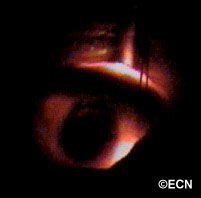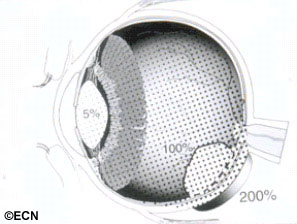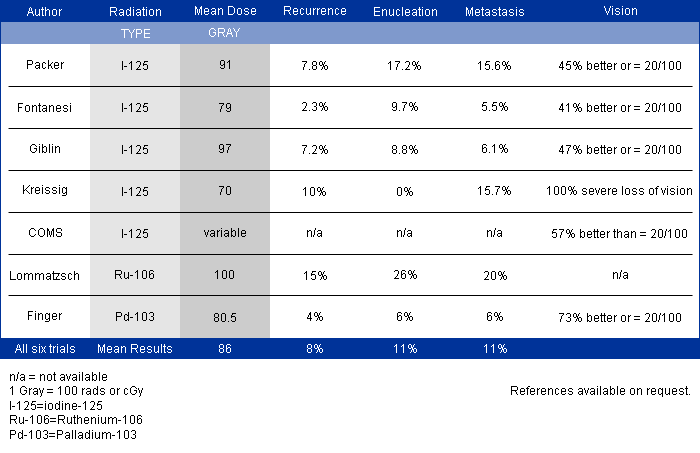
Ophthalmic plaque radiation therapy is the most commonly used “eye and vision-sparing” treatment for choroidal melanoma (around the world). A radioactive plaque is a small, dish-shaped device that contains a radioactive source.
In order to visualize the intraocular tumor during surgery, a bright light is placed on the eye. This is called transillumination. The thick and pigmented tumor within the eye blocks the light, creating a shadow or dark spot on the wall of the eye.

The edges of the shadow is marked (on the sclera) with a temporary tissue marker.Low-energy radioactive eye-plaques contain rice-sized iodine-125 or palladium-103 seeds that emit low energy photon (23-28 KeV) radiation. This radiation is effectively blocked by the gold-backing of the plaque creating a directional source.
Typically, the radioactive eye-plaque is then sewn onto the eye as to cover the intraocular tumor shadow, plus a 2-3 mm “free-margin.” This extra margin is used to make sure that the tumor is always under the plaque during radiation. With the plaque in place, radiation is continuously delivered over 5 to 7 days, and then removed.
The first plaques incorporated the radioactive material Cobalt-60 and later included Ruthenium-106 and Iodine-125. In 1990, palladium-103 (Pd-103) became available for the first time for treatment of intraocular tumors.

Multiple dose comparisons (versus iodine-125) showed that palladium-103 (Theragenics Corp. Buford, Georgia) offered a more favorable intraocular dose distribution in most cases. It delivered slightly more irradiation to the tumor while allowing less to be absorbed by the patients surrounding normal structures. Less radiation also reaches the operating surgeon and health-care personnel. Dr. Finger recommends the use of palladium-103 for ALMOST ALL of his patients with choroidal melanoma.
Long-term results on plaque-treated patients are now available.
Reported Results after Ophthalmic Plaque Radiation Therapy

Related Links
- The American Brachytherapy Society consensus guidelines for plaque brachytherapy of uveal melanoma and retinoblastoma – Download the PDF
- Dosimetry of 125I and 103Pd COMS eye plaques for intraocular tumors: Report of Task Group – Download the PDF
- Search PubMed for About Iodine-125 and Palladium-103 Plaques
- Search Google for About Iodine-125 and Palladium-103 Plaques









